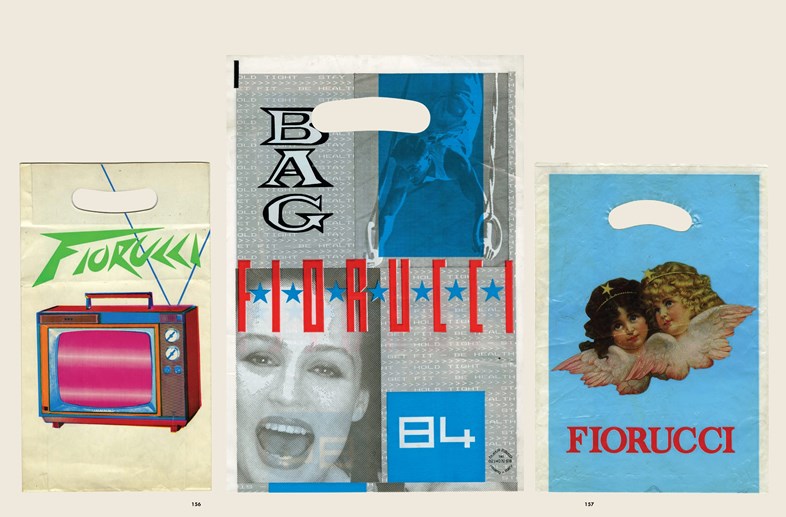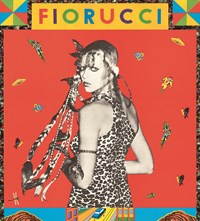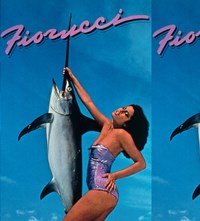The designer talks to IDEA’s David Owen about Fiorucci in an exclusive excerpt from a new book about the brand, published by Rizzoli
- TextTed Stansfield
- TextDavid Owen
It’s funny to think that before many fashion designers became fashion designers, they were fashion fans – passionate lovers of clothes, labels and anything pertaining to the world of style. This is true of Marc Jacobs who developed a fervent love of clothes in his early teens – specifically, the clothes of one particular brand: Fiorucci. Founded by Elio Fiorucci in 1967, this Italian label is responsible for many fashion trends we associate with the 1980s – bright colours, spandex and stretch denim. It was sexy and irreverent, and attracted a legion of fans including Jacobs, Andy Warhol and Madonna. Though Fiorucci’s original Milanese store closed in 2003, it’s been relaunched this year with some pop-up shops, a flagship in Soho (opening this month) and a book edited by IDEA’s David Owen and published by Rizzoli. Here, in an exclusive excerpt from this publication, Marc Jacobs discusses Fiorucci, which he was obsessed with during his teenage years.
DAVID OWEN: How old were you when you first encountered the world of Fiorucci?
MARC JACOBS: Well, I might have heard of it or encountered it when I was 13. I was living with my grandmother in New York City, and I wanted Fiorucci jeans so badly. And I remember she was resistant because they were quite expensive. I think they were $58 or something. Safety Jeans, they were called. And she was like, “I think it’s a little much for a 14-year-old to be going to school in $58 jeans.” But then I think it was when I was 15 that she finally gave in and bought me a pair.
DO: And you went there with your grandmother, or she gave you the money? Do you remember?
MJ: No, the first time I went there I went with her. But I spent the entire summer of my fifteenth year hanging out at the store. So I probably knew of it since 13, 14 was when I got my first pair of jeans, and then by 15 I’d become so... kind of into the whole thing.
Because first of all, Fiorucci was a thing. I mean, Fiorucci in New York was very particular. It was a really, really special kind of place. It was on 59th Street between Park and Lexington. That I remember clearly. And there was such an incredible cast of characters and there were so many things going on within the store. Literally the entire summer of my fifteenth year I hung out there every day. I mean, I went there as if I was employed by Fiorucci, which I wasn’t.
I showed up there some time before noon and spent the afternoon mostly hanging out with Lori Goldstein, who is now a very well-known stylist and editor. She was working at Fiorucci and they had all these concessions upstairs on the street level of the store. There was Sweet B Productions, which had all these cards and magazines and stuff like that, and that’s where I used to buy Interview magazine and all of my kind of trendy fashion magazines at the time. And then in the front there was this girl Suzanne, or Suzanna, who was doing Stagelight Cosmetics. And then Lori Goldstein was running a concession for Gay Bob, which was a doll. It was called the Gay Bob doll, and he came in a closet. And Balls, the candy that gave you courage. Lori had that concession at Fiorucci. And then I think there was this guy Patrick, who was doing the cappuccino and the espresso, right next to them. So there was like Stagelight to the far left, then there was Lori at the Balls and Gay Bob doll counter, and then Patrick doing the coffee.

DO: I guess part of the point is that at that age, even in permissive New York, you can’t go to a bar and you can’t go to Studio or get into any club.
MJ: Oh, I did. Oh, I did.
DO: You did that, too?
MJ: Yeah, I did. Oh, yeah. Age didn’t really prevent you from doing anything in New York in those days. I’m not sure it does now, either. No, I was going to clubs and stuff. I wasn’t working anywhere or employed anywhere, but I did show up to hang out with Lori pretty much every day. And of course there were all these incredible people who were working there. I mean, there was Joey Arias and Mark Fernandez, who had a band called Cha Cha Fernandez. Maripol was very involved, and I think she was working there as well, or she had something to do with it. And that was like the late 1970s, 1978 or 1979. If I was 15, it was 1978.
DO: From what you describe, it sounds like it was also a very gay-friendly store, even if obviously lots of girls were going in and just buying their tight jeans and crop tops.
MJ: Everybody was. I remember by the first time I went to Paris, there were Fioruccis all over Europe. I even went on a vacation with my grandmother, and there was a tiny Fiorucci – I don’t know if it was in Saint Martin, or something like that, but they were everywhere. The one in New York was very much a reflection of New York and the New York club scene and all that kind of stuff. And I think it incorporated a lot of people who were going out. But it did feel very international. It almost felt – again, this is through my eyes – but it felt to me like the people who shopped at Fiorucci were this group of people that literally were going to parties all over the world, all the time. That’s what they did. They got dressed up, looked great, and went to discos. You know, they went to Le Palace in Paris and they went to Studio in New York, et cetera, et cetera, et cetera. So they were just people who looked amazing and had these great characters and who spent their lives going to these fabulous parties.
Fiorucci is published by Rizzoli. Available from October 3, 2017.















